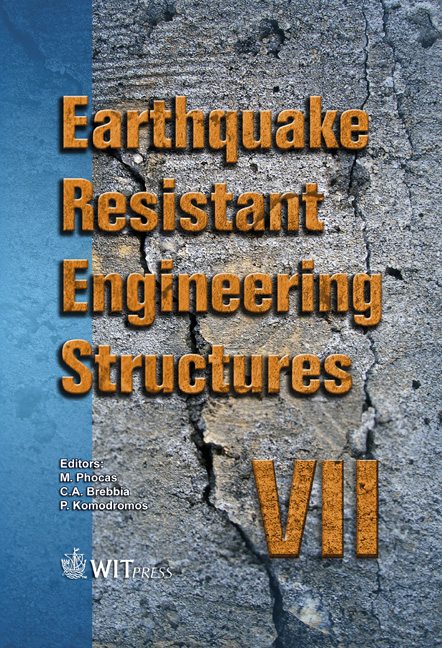Generalized Den Hartog Tuned Mass Damper System For Control Of Vibrations In Structures
Price
Free (open access)
Transaction
Volume
104
Pages
9
Page Range
185 - 193
Published
2009
Size
321 kb
Paper DOI
10.2495/ERES090171
Copyright
WIT Press
Author(s)
I. M. Abubakar & B. J. M. Farid
Abstract
The Den Hartog method is one of old, but efficient methods for the design of tuned mass damper (TMD) systems for passive control vibrations in buildings subjected to earthquake excitations. However, Den Hartog, in his model, did not include the main mass (structure) damping in deriving the equations for computing the optimum design parameters for the TMD system (damping and frequency ratios). In this work an attempt is made to generalize the Den Hartog method to include the effect of the structure damping in the derived equations. The dynamic equations for a TMD system attached to SDOF structure with damping are derived. Then, using the complex numbers technique, the equation for maximum displacement of the structure when subjected to harmonic excitation is derived. The numerical optimization technique is used to compute the optimum values of TMD parameters that will minimize the maximum displacement of the structure. Finally, the curve fitting procedure with trial functions is used to obtain equations for computing the optimum frequency ratio and optimum damping ratio for a TMD system. Keywords: tuned mass damper, Den Hartog model, structural damping, earthquake engineering, harmonic excitation. 1 Introduction The tuned mass damper (TMD) system is a passive energy absorbing device consisting of a translational mass, translational spring and translational viscous damper attached to a vibrating structure to reduce undesirable vibrations. There has been a considerable amount of research done on how best to design the mass dampers for use in the passive control of structures under excitation forces such
Keywords
tuned mass damper, Den Hartog model, structural damping, earthquake engineering, harmonic excitation.





